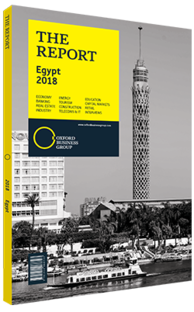New ground: Mutual funds
Outline
The first Egyptian mutual fund was launched in 1994, and since that time the industry has evolved slowly. There are nearly 100 funds operating under the direction of the Financial Regulatory Authority (FRA). There are specialised funds in a number of asset classes, including 28 equity, 10 sharia-compliant, seven fixed income, 27 money market, 11 balanced, three capital preservation, and one dollar- and one euro-denominated money market fund. The FRA has always been on the forefront of evolving and modernising the industry. The executive regulations of Law No. 95 of 1992 governing Egyptian mutual funds where completely revamped in 2007 and again in 2014.
From the mid-1990s until 2013, money market funds were very attractive to large segments of the investor population as they offered high liquidity and attractive yields compared to banks’ saving vehicles. These funds proved to be even more popular in 2011 as investors sought safer alternatives for their finances during an era of instability. On November 3, 2016 the Central Bank of Egypt (CBE) made the long-awaited decision to float the Egyptian pound and increase yields on Treasury bills (T-bills) and government bonds by an average of 400 basis points over 2017 for various tenors. This increase affected fund investors as well, with around LE8bn ($527m) redeemed from money market funds and LE1.1bn ($72.5m) from fixed-income funds.
Redemptions were caused by the funds’ inability to benefit from higher yields as new subscriptions were suspended due to a CBE decision that linked the fund’s size to that of the issuing bank’s capital and local deposits, which gradually reduced the size of such funds.
Today money market funds are still popular. Some 82% of managed assets are invested in mutual funds because they provide a unique service to the public by allowing them to easily participate in the Treasury market with daily liquidity under professional management.
Only a handful of banks have not yet established money market funds. If the CBE decides to remove the limit on the size of money market funds, they will be able to receive new subscriptions and attract potential new investors as T-bill yields are expected to remain attractive over the medium and long terms.
The market is also witnessing an increasing appeal towards more balanced investments, with two major funds having changed to balanced portfolios in 2016 and 2017. Moreover, in 2016 two additional capital preservation funds were launched. This type of fund invests in money market instruments while allocating around 10-20% of their assets to Egyptian equities and applying a strict stop-loss policy to ensure the protection of investments from market volatility.
Projection
Up until today, Egyptian funds were mainly launched by commercial banks. Collectively, asset managers controlled around LE27bn ($1.8bn) in mutual funds as of September 2017. The community is bracing for major new products as the FRA issues regulations for establishing endowment funds. Such investments take the form of closed-ended funds primarily invested in money market and fixed-income instruments, with proceeds generally directed towards charitable purposes. Endowment funds will allow a large number of non-profit organisations to find a constant and sustainable source of financing.
To foster a better overall environment, the FRA is also ensuring that the new regulations offer features to encourage transparency, including the appointment of independent auditors and the requirement that agencies publish their financials on regular basis, detailing total expenditures and receiving entities.
Another major field of development for the Egyptian fund industry is the launch of real estate funds which have proved to be successful in other MENA countries. Currently, investing in real estate is only open to wealthy individuals and specialised corporations. Such funds can make it possible for a broader set of investors to participate, thus allowing the fund management industry to play a much larger role in overall economic growth.
You have reached the limit of premium articles you can view for free.
Choose from the options below to purchase print or digital editions of our Reports. You can also purchase a website subscription giving you unlimited access to all of our Reports online for 12 months.
If you have already purchased this Report or have a website subscription, please login to continue.

